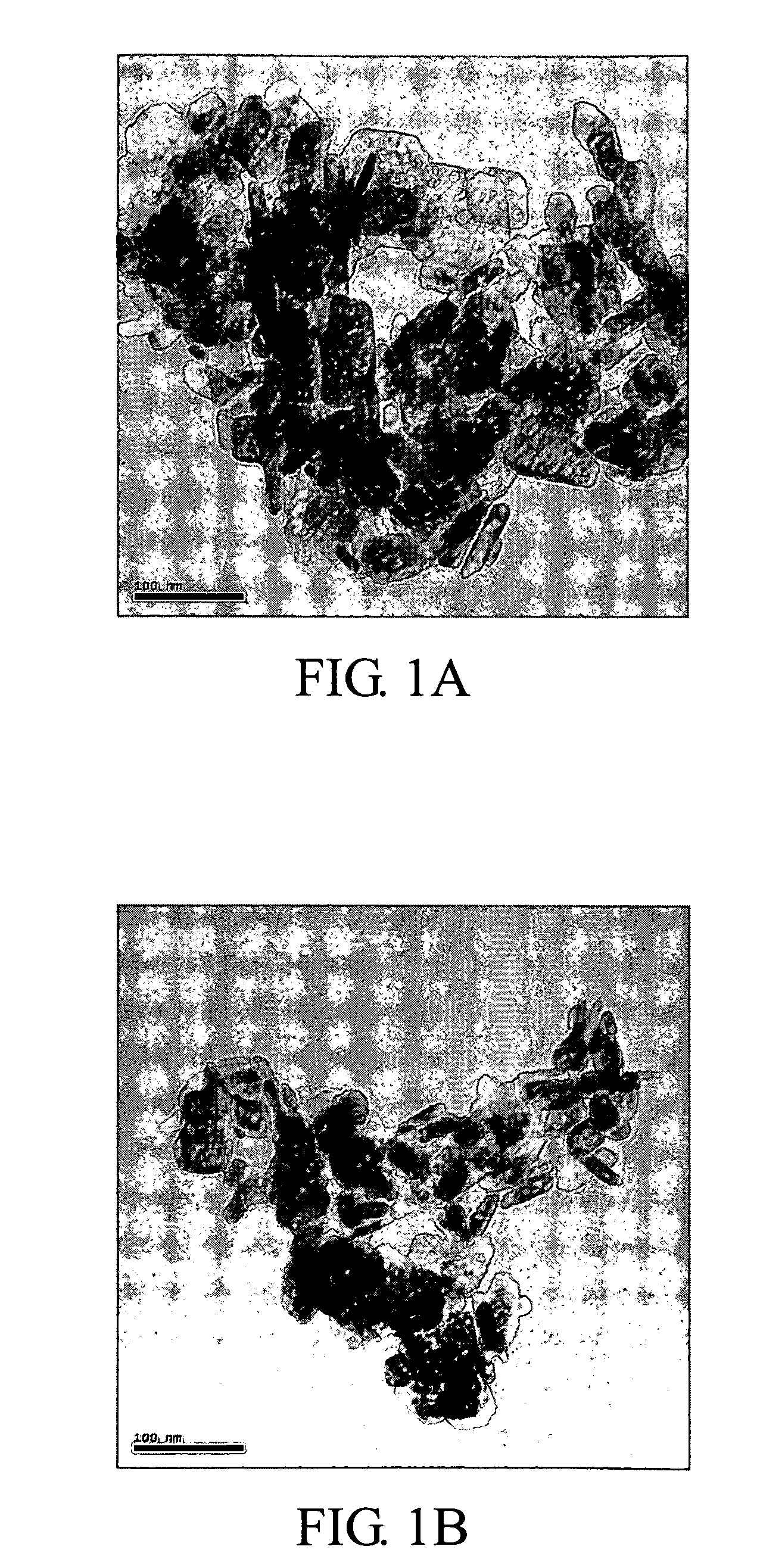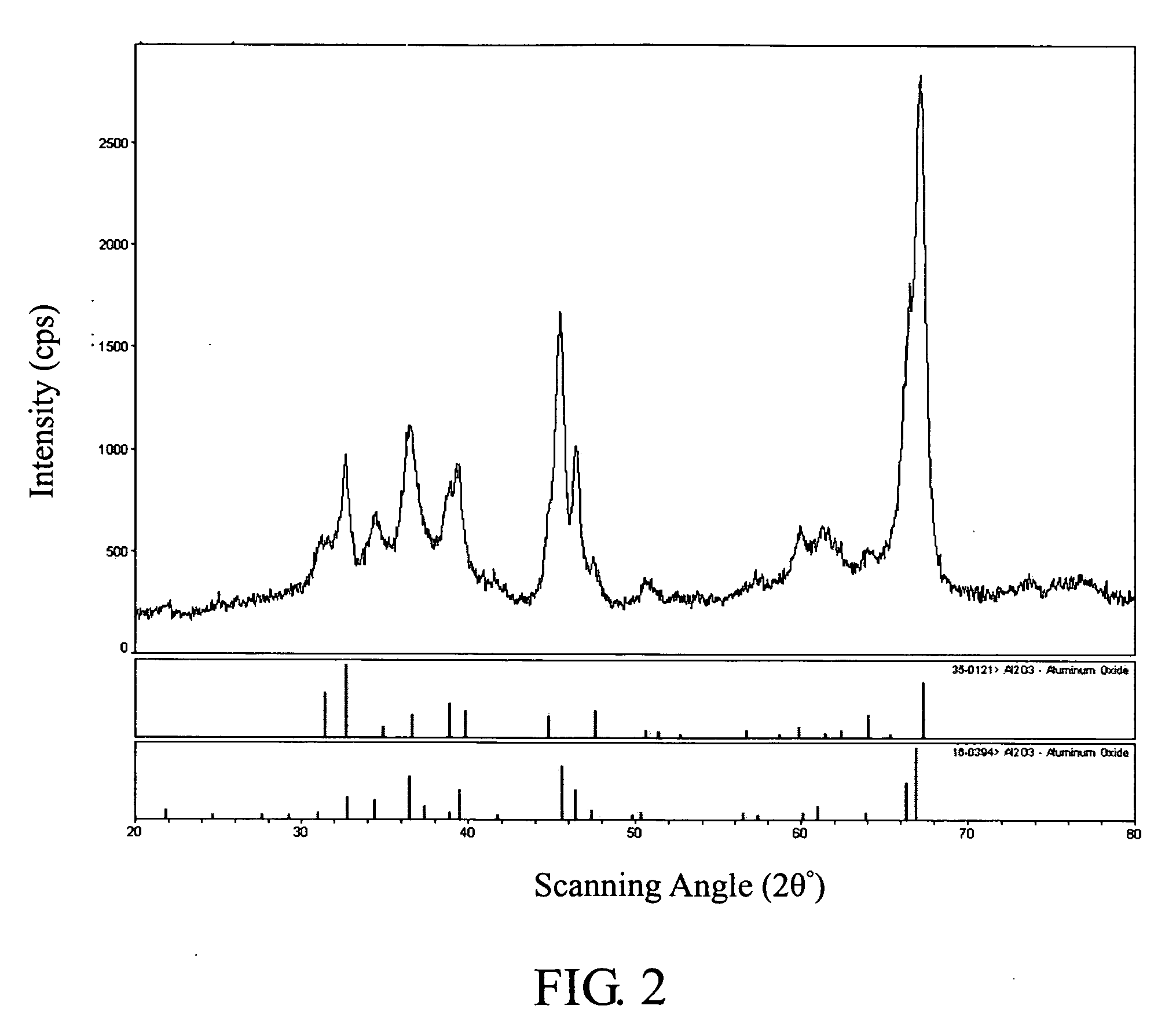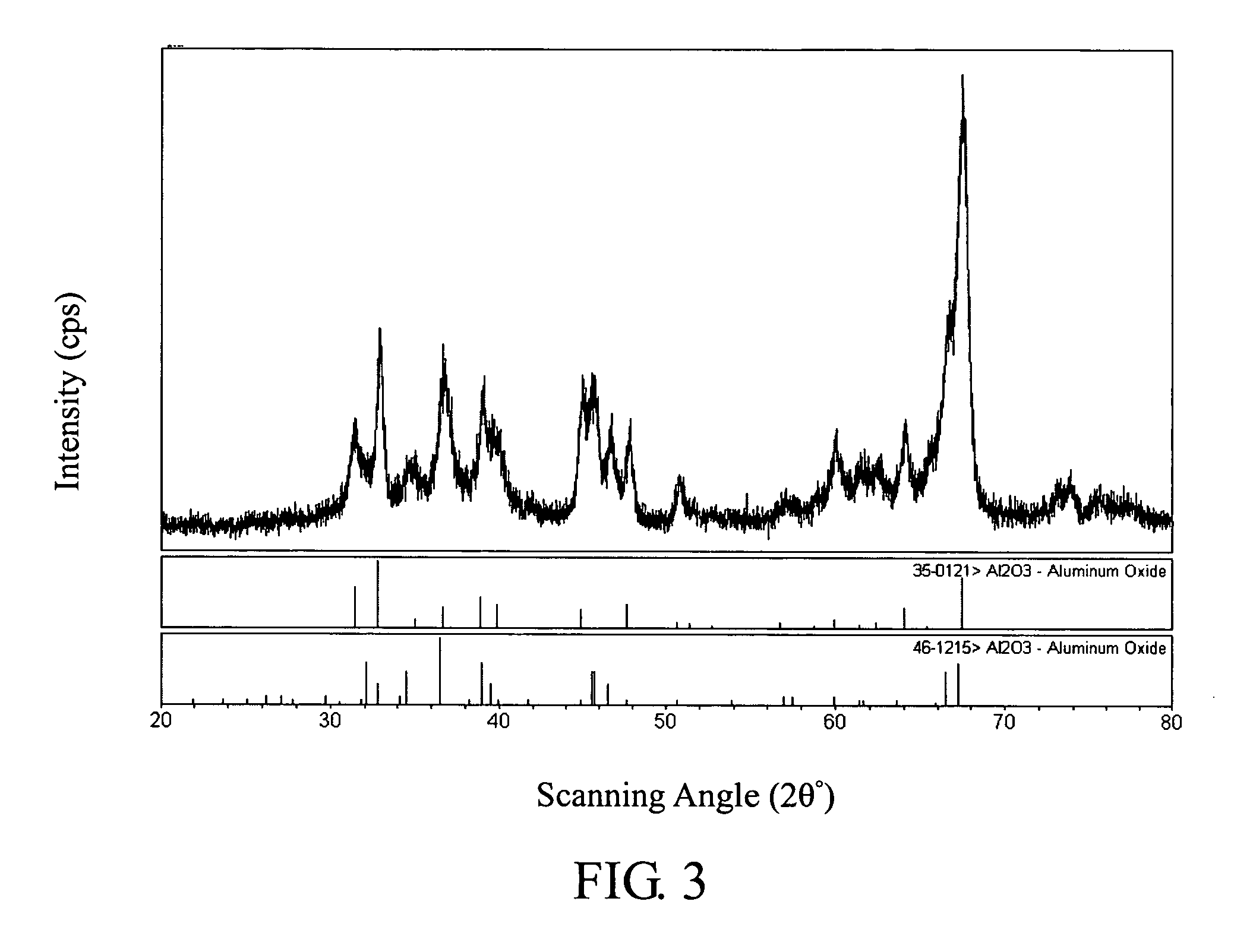Method for producing nano-scale theta phase alumina microparticles
a technology of alumina microparticles and nano-scale theta, which is applied in the field of producing nano-scale theta ()phase alumina microparticles, can solve the problems of more severe pollution during processing, more difficult grinding, and complicated extraction of purer or single-phase -phase alumina powders, so as to save process time and cost, uniform particle size, and high purification
- Summary
- Abstract
- Description
- Claims
- Application Information
AI Technical Summary
Benefits of technology
Problems solved by technology
Method used
Image
Examples
example 1
[0037] At first, a mixture of about 95 percent of the industrial θ-phase alumina powder and about 5 percent boehmite by weight serving as starting materials, is heated up to 1000° C. at a heating rate higher than 50° C. per minute, kept at 1000° C. for 3 minutes, and immediately quenched to room temperature. And then, the resultant alumina microparticles are further heated up to 800° C. at a heating rate higher than 50° C. per minute, kept at 800° C. for 2 minutes, so as to obtain nano-scale θ-phase alumina microparticles. And then, the same TEM and the XRD system as COMPARATIVE EXAMPLE are employed to examine the particle size and the phase identification with respect to the resultant nano-scale θ-phase alumina microparticles.
[0038] Reference is made to FIGS. 4A and 4B, which depict TEM pictures of the resultant nano-scale θ-phase alumina microparticles according to the EXAMPLE 1 of the present invention, wherein FIG. 4A is a bright field image of a single θ-phase alumina crystall...
example 2
[0039] At first, a mixture of about 44 percent of the industrial θ-phase alumina powder and about 56 percent boehmite by weight serving as starting materials, is heated up to 1200° C. at a heating rate higher than 50° C. per minute, kept at 1200° C. for 4 minutes, and immediately quenched to room temperature. And then, the resultant alumina microparticles are further heated up to 700° C. at a heating rate higher than 50° C. per minute, kept at 700° C. for 3 minutes, so as to obtain nano-scale θ-phase alumina microparticles.
[0040] And then, the same TEM and the XRD system as COMPARATIVE EXAMPLE are employed to examine the particle size and the phase identification with respect to the resultant nano-scale θ-phase alumina microparticles. Reference is made to FIGS. 6A and 6B, which depict TEM pictures of the resultant nano-scale θ-phase alumina microparticles according to the EXAMPLE 2 of the present invention. In the result of FIGS. 6A and 6B, the nano-scale θ-phase alumina microparti...
example 3
[0041] At first, a mixture of about 44 percent of the industrial θ-phase alumina powder and about 56 percent boehinite by weight serving as starting materials, is heated up to 1150° C. at a heating rate of 10° C. per minute, kept at 1150° C. for 10 minutes, immediately quenched to 700° C. and kept at 700° C. for 4 minutes, so as to obtain nano-scale θ-phase alumina microparticles.
[0042] And then, the same TEM and the XRD system as COMPARATIVE EXAMPLE are employed to examine the particle size and the phase identification with respect to the resultant nano-scale θ-phase alumina microparticles. The resultant nano-scale θ-phase alumina microparticles of EXAMPLE 3 have the uniform particle size ranging from 50 nm to 150 nm. The nano-scale θ-phase alumina microparticles of the EXAMPLE 3 are substantially composed of a major θ-phase alumina powders, and additional mixed with little α- and δ-phase alumina powders.
PUM
| Property | Measurement | Unit |
|---|---|---|
| particle size | aaaaa | aaaaa |
| temperature | aaaaa | aaaaa |
| temperature | aaaaa | aaaaa |
Abstract
Description
Claims
Application Information
 Login to View More
Login to View More - R&D
- Intellectual Property
- Life Sciences
- Materials
- Tech Scout
- Unparalleled Data Quality
- Higher Quality Content
- 60% Fewer Hallucinations
Browse by: Latest US Patents, China's latest patents, Technical Efficacy Thesaurus, Application Domain, Technology Topic, Popular Technical Reports.
© 2025 PatSnap. All rights reserved.Legal|Privacy policy|Modern Slavery Act Transparency Statement|Sitemap|About US| Contact US: help@patsnap.com



